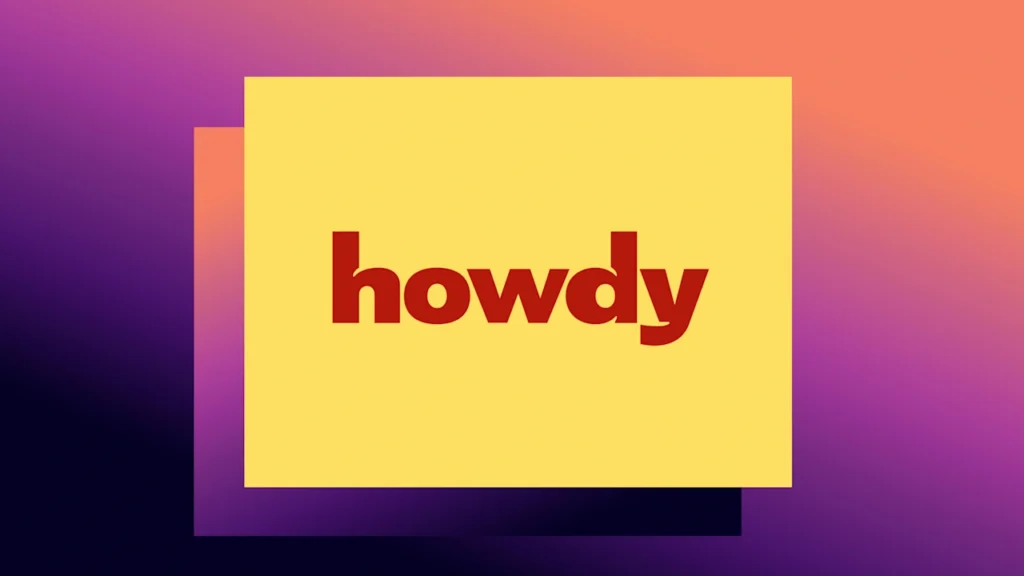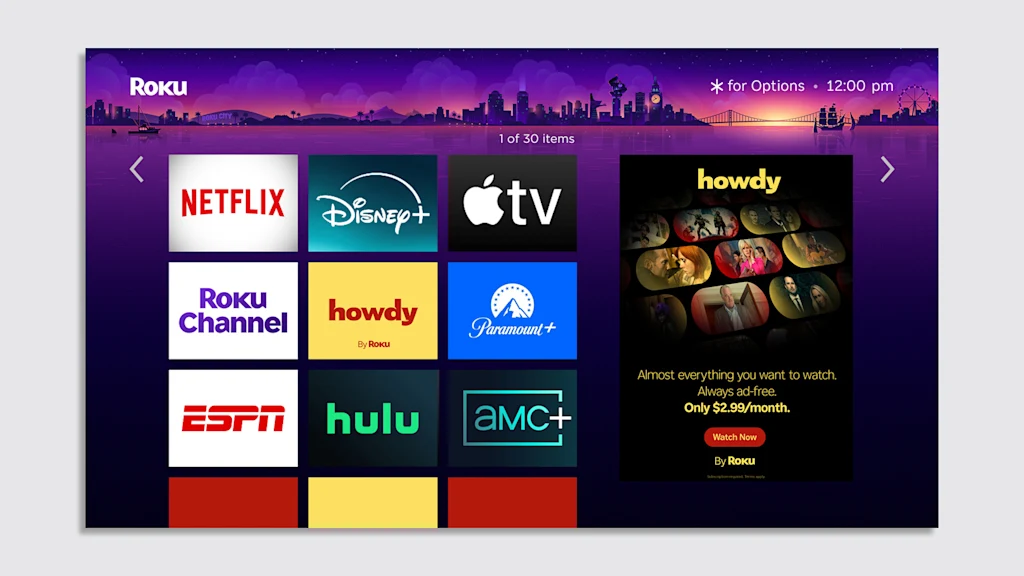
Roku just launched a brand new subscription service, and it looks nothing like the streamers you’re used to.
Howdy, which was unveiled on August 5, is an ad-free subscription service for viewers on a budget. Whereas an ad-free subscription to popular options like Netflix and Hulu would cost $17.99 per month, Howdy is just $2.99 per month—the trade-off being that it comes with a smaller library of available content. In an interview with USA Today, Roku confirmed that Howdy will initially be available only on Roku devices, but is set to roll out on mobile and other platforms “in the near future.”
Roku appears to be positioning Howdy as a disruptor in a streaming space that has become increasingly preoccupied with implementing more stratified subscription tiers and “premium” offerings. While streaming services initially lured viewers of pay TV away with the promise of an adless experience, by May of last year, Netflix, Disney+, Peacock, Paramount+, and HBO Max had all added a lower subscription tier with ads, coaxing subscribers to pay more to avoid commercials.
To break into the saturated streaming space, Howdy is betting on both a unique business model and a unique look that’s pretty unmissable on the Roku homepage. The brand has embraced a retro wordmark and a color palette of red and yellow—an overall aesthetic that’s more evocative of a classic diner than a media platform.
A name designed for “warmth, comfort, and connection”
Howdy’s branding was designed in-house by Roku’s Creative Studio, with assistance from the L.A.-based firm Compadre on the logo animation and sonic. Damon Van Deusen, Roku’s VP of brand & creative, says the effort started by “letting the unique product positioning of the service shape the brand’s personality.” The actual brand name itself is inspired by Roku founder and CEO Anthony Wood, who frequently uses “howdy” as a greeting in the office, van Deusen says.
“Bottom line, we chose Howdy because it is a feel-good word that radiates warmth, comfort, and connection—what we want audiences to experience when they tune into the familiar comfort programming that will be available on our new service,” van Deusen says.
That playfulness and familiar charm is echoed in the brand’s custom wordmark, which was adapted from several existing wood cut and western typefaces. The letters have been inflated for a “soft, cushion-like” feel, while cut-outs in the characters h, d, and y come together with the word’s “o” shapes to evoke a winking face in the animatic versions of the mark. The chunky, rounded, sans-serif font has a ‘70s feel that’s recently come back into style, appearing in other recent work like Burger King’s rebrand and Glossier’s pop-up brand logo.

Howdy branding goes full ketchup and mustard
Perhaps most eye-catching, though, is the brand’s red and yellow color scheme, which viewers probably associate most closely with the food and beverage space—more specifically, McDonald’s.
“Our ‘Chili’ and ‘Pineapple’ colors are part of a visual identity that feels upbeat, friendly, and accessible,” van Deusen says. “While they may feel loosely familiar from other beloved consumer brands, we liked that these colors would be a proven attention-grabber within streaming and give us a playful and unmissable contrast that helps the brand stand out and connect instantly.”
In a streaming landscape that’s flooded with blue logos, including Paramount+, HBO Max, Amazon Video, and Disney+, Howdy’s color palette speaks for itself, drawing on innate consumer nostalgia while still carving out a new space in the category.
“We leaned into an unexpected palette that felt both emotionally vibrant and visually distinct—a combination that wasn’t being used, and now can’t be ignored,” van Deusen says.


